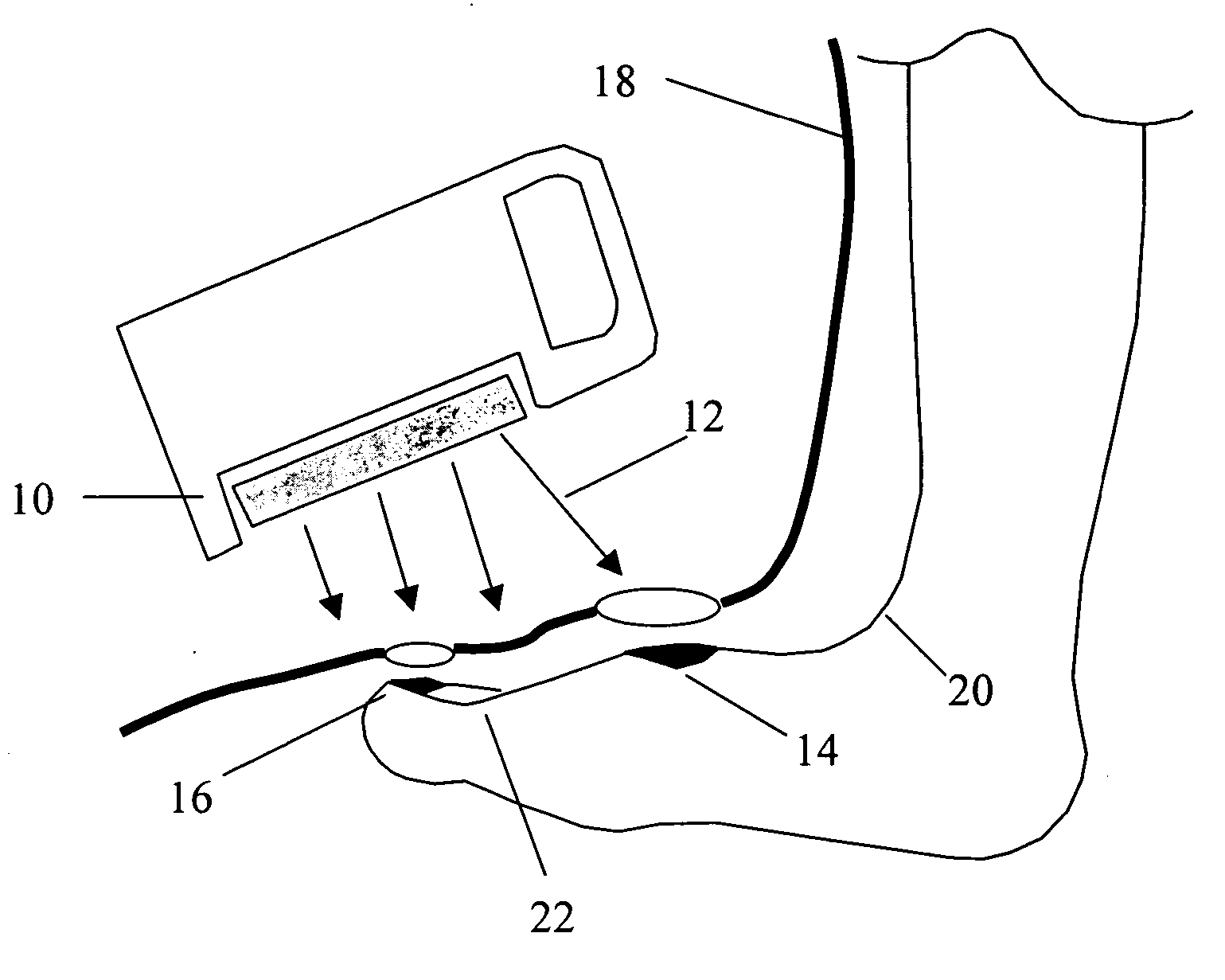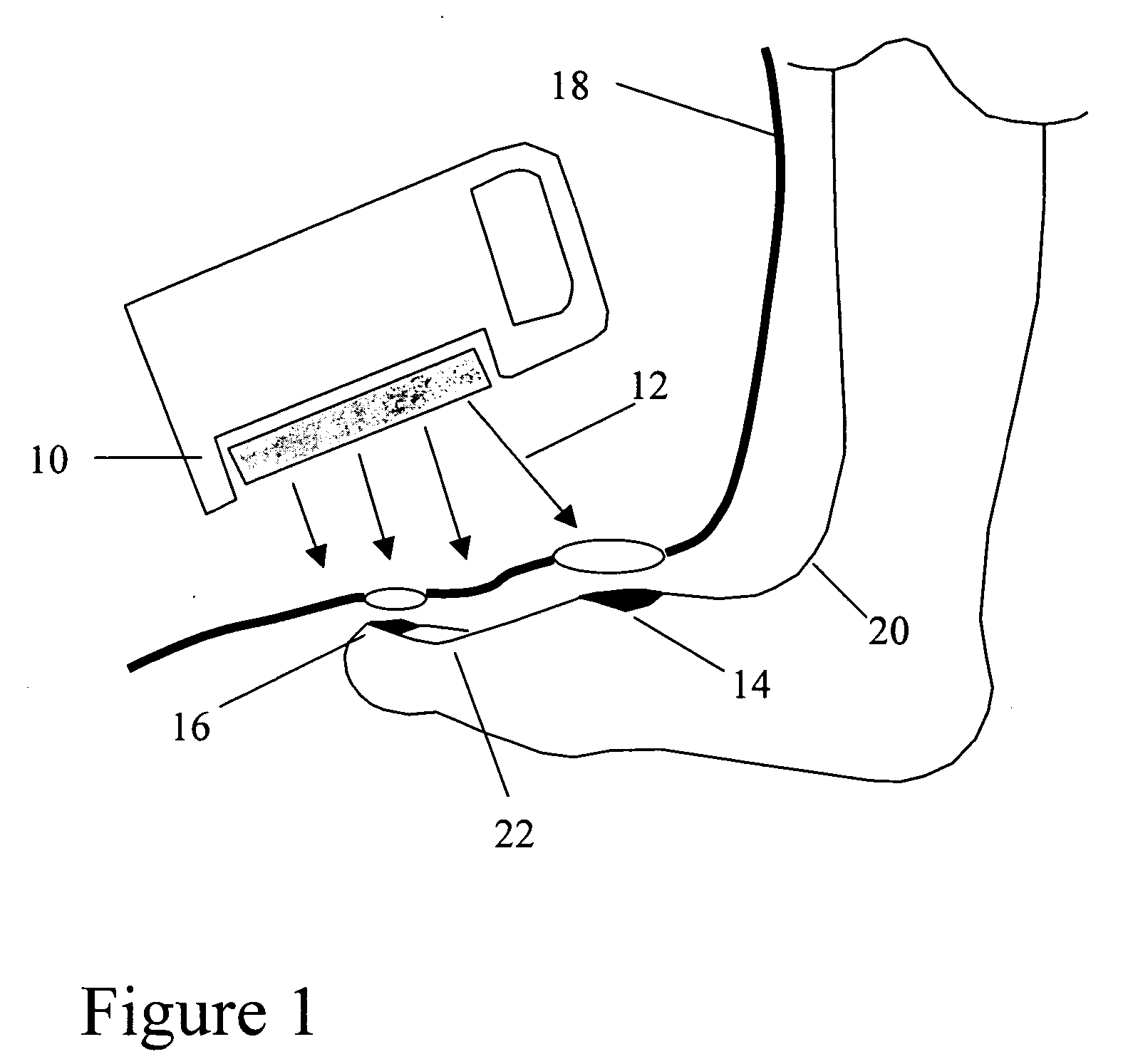Alteration of the skin and nail for the prevention and treatment of skin and nail infections
- Summary
- Abstract
- Description
- Claims
- Application Information
AI Technical Summary
Benefits of technology
Problems solved by technology
Method used
Image
Examples
Embodiment Construction
[0026] A preferred embodiment of the invention is illustrated in FIG. 1. The invention is a method to prevent skin and nail infections and to treat existing skin and nail infections. The method of treatment uses an agent or means 10 and 12 that changes the composition of the skin 14 and nail 16 to be treated. A means 18 can be provided to prevent the alteration the other areas of the skin 20 and nails 22 that do not require treatment.
[0027] In a preferred embodiment the alteration of the skin or nail may change the skin or nail so that it no longer is a food source for the organism which causes infection. The alteration may be of the entire skin or nail or it may be the alteration of a portion of the skin or nail such as altering the skin or nail that is in direct contact with the skin or nail.
[0028] In a preferred embodiment the alteration of the skin or nail may also change the skin or nail so that the skin or nail becomes toxic to the organism which causes infection.
[0029] In ...
PUM
 Login to View More
Login to View More Abstract
Description
Claims
Application Information
 Login to View More
Login to View More - R&D
- Intellectual Property
- Life Sciences
- Materials
- Tech Scout
- Unparalleled Data Quality
- Higher Quality Content
- 60% Fewer Hallucinations
Browse by: Latest US Patents, China's latest patents, Technical Efficacy Thesaurus, Application Domain, Technology Topic, Popular Technical Reports.
© 2025 PatSnap. All rights reserved.Legal|Privacy policy|Modern Slavery Act Transparency Statement|Sitemap|About US| Contact US: help@patsnap.com


